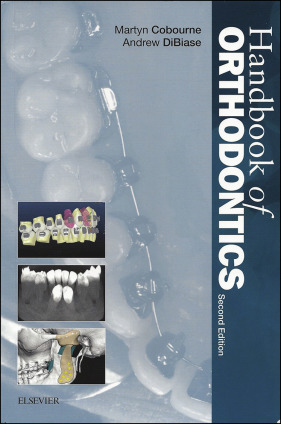
The second edition of Handbook of Orthodontics is markedly improved over the first edition. Clinical practitioners as well as orthodontic educators and those involved in research will benefit from the additions to this text. As the practice of evidence-based dentistry becomes the norm in the specialty of orthodontics, this handbook contributes new information in 2 ways. First, there are new text boxes situated appropriately throughout the book that specifically ask and explain: “Where is the evidence?” These boxes provide a contemporary and succinct update on the best available evidence for many aspects of orthodontic care. The authors have also identified publications that have particular importance in the field, from both historical and evidence-based perspectives, and have highlighted key findings in the bibliography. Second, the authors have introduced a new chapter that covers the basic principles of evidence-based medicine in the context of clinical orthodontics. These additions will be highly valued by most clinicians.
This book will look small on your bookshelf, but it seems comprehensive, with its coverage of everything from prenatal development of the craniofacial region to the development of the dentition and all types of malocclusions. Chapters then explore the management of problems in the mixed and permanent dentitions in detail, as well as various treatment modalities and orthognathic surgery. Cleft lip and palate, and common syndromes affecting the craniofacial region, are also included. I found the clinical text boxes with summaries of evidence-based findings to be fascinating. By asking “where is the evidence?” for a number of controversial issues directly related to clinical treatment decisions made every day by practicing clinicians, the name Handbook of Orthodontics seems justified. Once started on a track to benefit from this handy format, I could not lay the book down for more than a few minutes. Although the often-debated clinical issues are too numerous to mention in this brief review, the following examples will whet your appetite to order this book.
“Where is the evidence?” for making the following determinations: best method for determining the onset and peak of the pubertal growth spurt, optimum force for orthodontic tooth movement, how fast we can move teeth, early interventions for Class III malocclusions, functional appliances and mandibular growth, the most efficient archwire sequence, how to manage an ankylosed maxillary central incisor, stopping prolonged digit-sucking habits in children, and randomized controlled trials of early Class II treatment.
This is a partial listing of the decision-making challenges that confront the clinician’s daily routine. When you find a quiet, reflective time of the day, you might want to delve into the entirely new chapter entitled “Evidence-based orthodontics” beginning on page 530. Although the standardized hierarchy of evidence is not new, the current checklist for CONsolidated Standards Of Reporting Trials (CONSORT) is described with a flow diagram of the progress through the phases of a parallel randomized controlled trial. A new chart is included in this chapter listing 6 disadvantages of randomized controlled trials. The Preferred Reporting Items for Systematic Reviews and Meta-Analyses (PRISMA) guidelines are also available to help authors properly format and publish their systematic reviews. Although the remainder of the chapter may be more detailed than the typical clinician has the time to study, Table 14.1 should not be overlooked. It includes a list of 13 Cochrane systematic reviews published on orthodontic topics from 2011 through 2015. The authors of this text are obviously proud to note how the specialty of orthodontics is now well represented in the Cochrane database of systematic reviews. At the same time, they want to remind us that many of these reviews lack the high-quality evidence needed to properly inform clinical practitioners in all treatment scenarios.
You will find this handbook to be beautifully illustrated and a pleasure to read. Because Handbook of Orthodontics was entirely written by 2 experienced authors, it has a continuity that is frequently missing in heavier editions promoted by other well-known educators and clinicians. I found this to be an advantage, especially in the way that controversial clinical topics are supported by published research findings. With this in mind, I highly recommend this book for fourth-year dental school students, all graduate orthodontic residents, and educators and clinicians in our specialty. I have one simple request: don’t ask to borrow my copy.
Martyn Cobourne is a professor of orthodontics at King’s College London Dental Insitiute and an Honorary Consultant in Orthodontics at Guy’s and St Thomas’ NHS Foundation Trust, United Kingdom. Andrew DiBiase is a consultant orthodontist, East Kent Hospitals University NHS Foundation Trust, United Kingdom.
Stay updated, free dental videos. Join our Telegram channel

VIDEdental - Online dental courses


